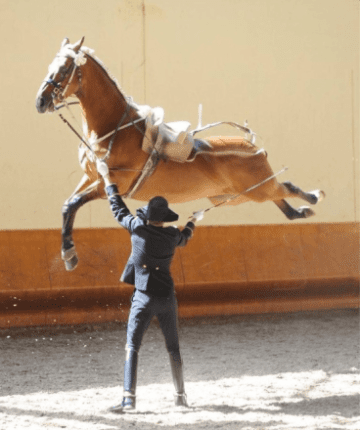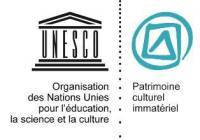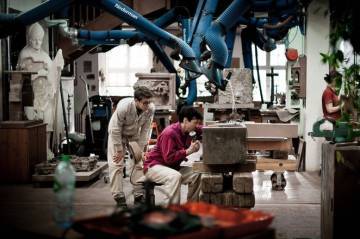Qu'est-ce que le Patrimoine culturel immatériel ?
Le Patrimoine culturel immatériel (PCI) englobe des pratiques et savoirs dont chacun hérite en commun, et qu'il s'efforce collectivement de faire vivre, recréer et transmettre. Ce patrimoine vivant découle de la Convention Unesco de 2003 pour la sauvegarde du PCI, ratifiée par la France en 2006 et mise en œuvre par le ministère de la Culture.
Le PCI, définition
Le PCI recouvre les expressions et traditions orales, les pratiques sociales, les rituels, les événements festifs, les savoirs et pratiques relevant des arts du spectacle, les savoir-faire artisanaux ou encore les connaissances en lien avec la nature et l’univers.
L’implication des personnes ou groupes porteurs de ces pratiques culturelles immatérielles est la condition première de la sauvegarde de ce type de patrimoine.
Patrimoine vivant témoin de la diversité culturelle, le PCI fait le lien entre patrimoine matériel et naturel, et contribue au développement durable.
L'équitation de tradition française est une pratique fondée sur l'harmonie des relations homme-cheval, la légèreté et l'absence de contraintes. Elle est le seul PCI concernant l’ensemble de la France, avec le Repas gastronomique des Français.
La Convention de l'Unesco pour la sauvegarde du PCI
La France a ratifié en 2006 la Convention de l’Unesco du 17 octobre 2003 pour la sauvegarde du Patrimoine culturel immatériel.
La Convention vise les pratiques, représentations, expressions, connaissances et savoir-faire que les communautés reconnaissent comme faisant partie de leur patrimoine culturel. Elle a pour objectif de sensibiliser un large public aux pratiques culturelles immatérielles, de renforcer la reconnaissance des détenteurs et des praticiens et d’améliorer les conditions d’exercice, de transmission, de sauvegarde et de diffusion de ces pratiques.
Sa mise en œuvre a été confiée en France, au ministère de la Culture, au département Recherche, Valorisation et PCI de la délégation à l'Inspection, la Recherche et l'Innovation (DIRI).
Les missions du Ministère
Pour répondre aux demandes de la Convention Unesco, le ministère a pour mission de :
- dresser et tenir à jour l’inventaire des Pratiques Culturelles Immatérielles présentes sur son territoire ;
- accompagner les candidatures sur les listes de l’Unesco ;
- diffuser et promouvoir les enjeux du PCI ;
- conduire des actions de recherche et de valorisation sur le PCI ;
- élaborer des ressources métier et proposer des formations initiales et continues pour les futurs professionnels du patrimoine et acteurs culturels ;
- assurer le secrétariat du Comité du Patrimoine Ethnologique et Immatériel.
Pour répondre à ces objectifs, le ministère coordonne un réseau d'acteurs national constitué des conseillers à l'ethnologie et pour le PCI dans les directions des affaires culturelles, de référents PCI situés dans des Ethnopôles, de fédérations ainsi que de multiples associations spécialisées.
Inclusions nationales et inscriptions internationales
L’inscription de pratiques relevant du Patrimoine culturel immatériel peut se faire au niveau national ou international.
- Au niveau national, c’est via l’Inventaire national du PCI en France que son répertoriées les pratiques du PCI. L'inventaire est constamment enrichi grâce aux candidatures spontanées et à l'appel à projets annuel. Les détenteurs de pratiques inscrites à l’Inventaire reçoivent l’emblème « PCI en France » pour valoriser leur implication dans la démarche de sauvegarde et de transmission de leurs traditions vivantes.
- Au niveau international, c’est sur les trois listes instaurées par la Convention Unesco de 2003 que les pratiques du PCI sont inscrites. Ces trois listes sont : la Liste représentative, la Liste de sauvegarde urgente et le Registre des bonnes pratiques. L'inclusion à l'Inventaire national est un des critères pour candidater sur les 2 listes. Les candidatures nationales sont soumises au quota d'un dossier tous les deux ans, mais pas les candidatures multinationales.
Pour candidater au Patrimoine culturel immatériel
Le comité du Patrimoine ethnologique et immatériel
Le Comité du Patrimoine Ethnologique et Immatériel valide les demandes d'inclusion à l'Inventaire national, et formule un avis consultatif à l'intention du Ministre pour les demandes d'inscription sur les listes Unesco. Il se réunit trois à quatre fois par an.
Procédures et rôle du Comité du Patrimoine Ethnologique et Immatériel - Vademecum à l'usage des membres du CPEI (PDF)
Le Centre français du Patrimoine Culturel Immatériel
Le Centre français du PCI (Ethnopôle de la Maison des Cultures du Monde), a été désigné par le ministère de la Culture comme « organisme compétent pour la sauvegarde du PCI présent sur le territoire national ». Il est accréditée en tant qu'organisation non-gouvernementale (ONG) ayant des fonctions consultatives auprès du Comité intergouvernemental de la Convention de l'Unesco.
En lien avec le ministère de la Culture, ses missions principales sont de coordonner la mise en œuvre de la Convention et de participer à l’accompagnement des candidatures aux listes de l'Unesco. Il est également un acteur investi de la sensibilisation des publics grâce aux diverses expositions, ateliers pédagogiques, conférences ou manifestations qu'il met en place.
Le centre abrite notamment les archives de la Maison des Cultures du Monde, dont une partie est consultable en ligne sur la base de données multimédia Ibn Battuta, ainsi que ses collections d’objets (instruments de musique, masques).
Autres acteurs
Enfin, de nombreux autres acteurs participent à l'action et à la réflexion autour du PCI tels que :
- plusieurs unités et laboratoires (Université, CNRS) dont le Lahic (IIAC, CNRS/EHESS), qui étudient les politiques patrimoniales en France et dans le monde ;
- des collectivités ;
- des institutions ;
- des associations ;
- des chercheurs, praticiens ;
- etc.
Pour découvrir les principaux acteurs de la sauvegarde du PCI
Recherche et valorisation
Journées d’étude, colloques, conférences, expositions, etc., sont très régulièrement organisés par les différents membres, publiques et privés, du réseau du PCI en France. Certaines de ces manifestations sont soutenues ou co-élaborées par le ministère de la Culture. Des prix du PCI sont attribués à l’occasion des festivals « Cinéma du réel » et « Jean-Rouch » (comité du Film ethnographique), qui promeuvent les films ethnographiques.
Partager la page



